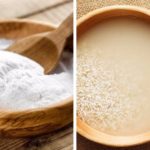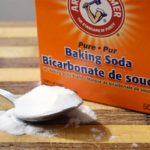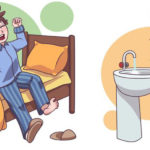Causes of Yellowing Teeth
Due to high dental plaque
Dental plaque is a sticky layer caused by bacteria and leftover food that accumulates on the teeth when not properly cleaned. Over time, dental plaque combines with minerals (calcium, fluoride, etc.) in saliva to form tartar and becomes very hard.
Consuming sugary and dark-colored foods
Chemical colorants added to or the natural colors of food will stick to the tooth enamel, causing the tooth surface to turn yellow. In addition, foods that are high in sugar, such as cakes, ice cream, and chocolate, will accumulate bacteria that cause plaque.
Frequent consumption of tea and coffee
Similar to dark-colored foods, the habit of consuming dark-colored, acidic or sugary drinks can have a negative impact on dental health, causing teeth to become yellow and affecting tooth enamel.
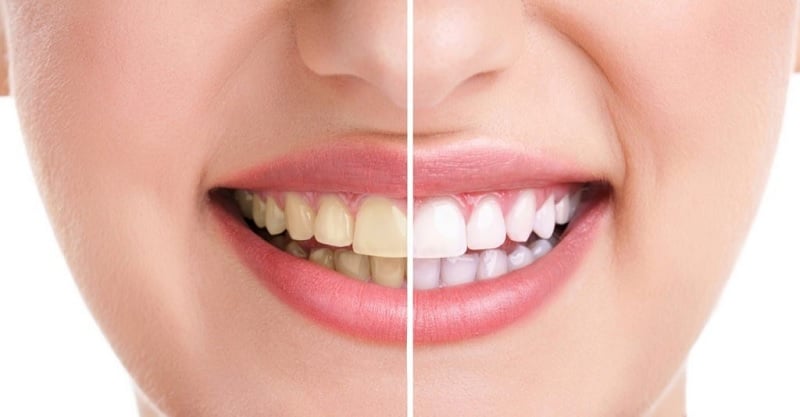
Foods high in sugar, such as cakes, ice cream, and chocolate, will accumulate bacteria that cause plaque.
Years of smoking
Tobacco contains nicotine, which causes yellowing and forms brown/black stains between teeth. In addition, the habit of smoking also damages the lungs, reduces blood flow to the gums, and causes inflammation.
Inadequate oral hygiene
Inadequate oral care and hygiene habits can cause plaque to accumulate on the surface of the teeth, causing them to become yellow and even cavities.
Due to tooth enamel
Yellowing teeth can be caused by thin tooth enamel, exposing the yellowish dentin. People with tooth fractures or chips that expose the dentin can also lead to darker yellow teeth.
Other causes such as teeth grinding during sleep can also exert strong pressure on the teeth, causing them to crack or wear down the enamel, gradually causing yellowing of the teeth.
Teeth Whitening
Baking soda
When using baking soda for teeth whitening at home, it is important to do it correctly. Depending on the condition of your teeth, it is best to consult a dentist.
– Using dry baking soda: Apply a small amount of baking soda evenly on the tooth surface. After about 1 minute, rinse your mouth thoroughly with water.
– Using baking soda combined with salt: Mix baking soda with salt in a ratio of 3:1, add a little water to form a paste, then brush all surfaces of the teeth evenly. Finally, rinse your mouth with clean water.
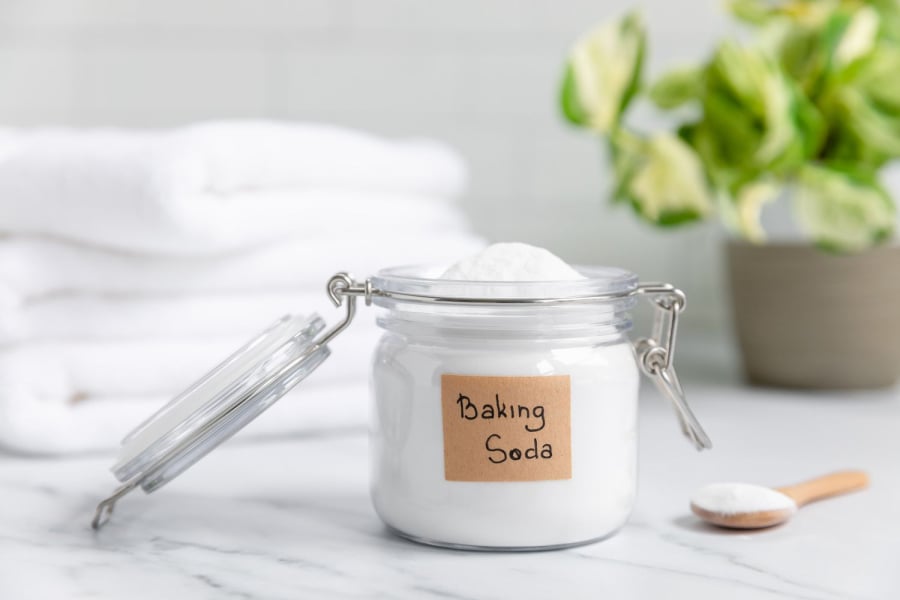
Baking soda has the ability to whiten teeth.
Activated charcoal
Activated charcoal has the ability to remove plaque and yellow stains on teeth. Moreover, this ingredient also has antibacterial properties. When brushing teeth, perform gentle movements, especially paying attention to the gum area.
Salt and lemon
– Add 1/2 teaspoon of salt and 1/2 teaspoon of lemon juice.
– Dip the toothbrush into the mixture, then brush the tooth surface for about 2-3 minutes.
– Finally, rinse your mouth thoroughly with water. You should only use this method 1-2 times a week to avoid the risk of enamel erosion, which can make your teeth more sensitive and weaker.

Oral care is very important.
Apple cider vinegar
Apple cider vinegar can also be used to remove plaque on the tooth surface. You can dip the toothbrush into apple cider vinegar, then brush your teeth for about 2-3 minutes. Finally, rinse your mouth thoroughly with water.
- Baking soda: Apply a small amount of dry baking soda to the teeth, wait a minute, and then rinse. Alternatively, mix baking soda with salt, add water to form a paste, brush teeth with it, and then rinse.
- Activated charcoal: Brush teeth gently with activated charcoal to remove plaque and stains. Its antibacterial properties also help improve oral health.
- Salt and lemon: Mix salt and lemon juice, dip a toothbrush into the mixture, brush teeth for 2-3 minutes, and then rinse. Use this method sparingly (1-2 times a week) to avoid enamel erosion.
- Apple cider vinegar: Dip your toothbrush into apple cider vinegar, brush your teeth for 2-3 minutes, and then rinse thoroughly.

























